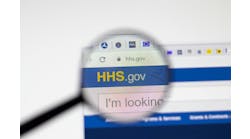While telehealth and remote patient monitoring can provide benefits for patients who cannot easily travel long distances for care, the most significant barriers still are payment and coverage restrictions, according to a new report from the U.S. Government Accountability Office (GAO).
The Medicare Access and CHIP Reauthorization Act of 2015 (MACRA) included a provision for GAO to study telehealth and remote patient monitoring, so as such, among other reporting objectives, this report from GAO reviewed (1) the factors that associations identified as affecting the use of telehealth and remote patient monitoring in Medicare and (2) emerging payment and delivery models that could affect the potential use of telehealth and remote patient monitoring in Medicare. Additionally, in the 21st Century Cures Act, enacted in December 2016, Congress expressed an interest in expanding the use of telehealth in Medicare through increasing the types of sites where telehealth can occur.
In the audit, selected associations representing providers and patients most often cited the potential to improve or maintain quality of care as a significant factor that encourages the use of telehealth and remote patient monitoring in Medicare. For example, according to officials from one provider association, telehealth can improve patient outcomes by facilitating follow-up care, while remote patient monitoring is helpful for treating patients with chronic diseases.
But, barriers do exist. Indeed, the selected associations most often cited concerns over payment and coverage restrictions. For example, officials from a provider association noted that Medicare telehealth coverage restrictions limit the geographic and practice settings in which beneficiaries may receive services. While not indicating how significant these factors are to Medicare, officials with a payer association told GAO that they considered these factors—also identified by the provider and patient associations—as either encouraging use or creating barriers to the use of telehealth and remote patient monitoring.
For the study, GAO reviewed agency documents and regulations and interviewed agency officials and also selected nine general and medical specialty associations with expertise and interest in telehealth or remote patient monitoring—six provider, two patient, and one payer association—based on a review of relevant documents and literature and through background interviews.
The report further noted that Medicare models, demonstrations, and MACRA have the potential to expand the use of telehealth and remote patient monitoring. The Centers for Medicare & Medicaid Services supports eight models and demonstrations in which certain Medicare telehealth requirements have been waived, such as requirements for the locations and facility types where beneficiaries can receive telehealth services. For example, the waivers allow beneficiaries to access telehealth in urban areas, or from their homes.
Additionally, the use of telehealth and remote patient monitoring in Medicare may change depending on how many clinicians use them as a way to achieve the goals of the new Merit-based Incentive Payment System (MIPS), which—starting in 2017—will pay clinicians based on quality and resource use, among other things. Under this payment program, clinicians can use telehealth and, in some instances, remote patient monitoring, to help meet the payment program's performance criteria. For example, clinicians could use telehealth to coordinate care or use remote patient monitoring to remotely gather information to determine a patient's proper dose of medication.


